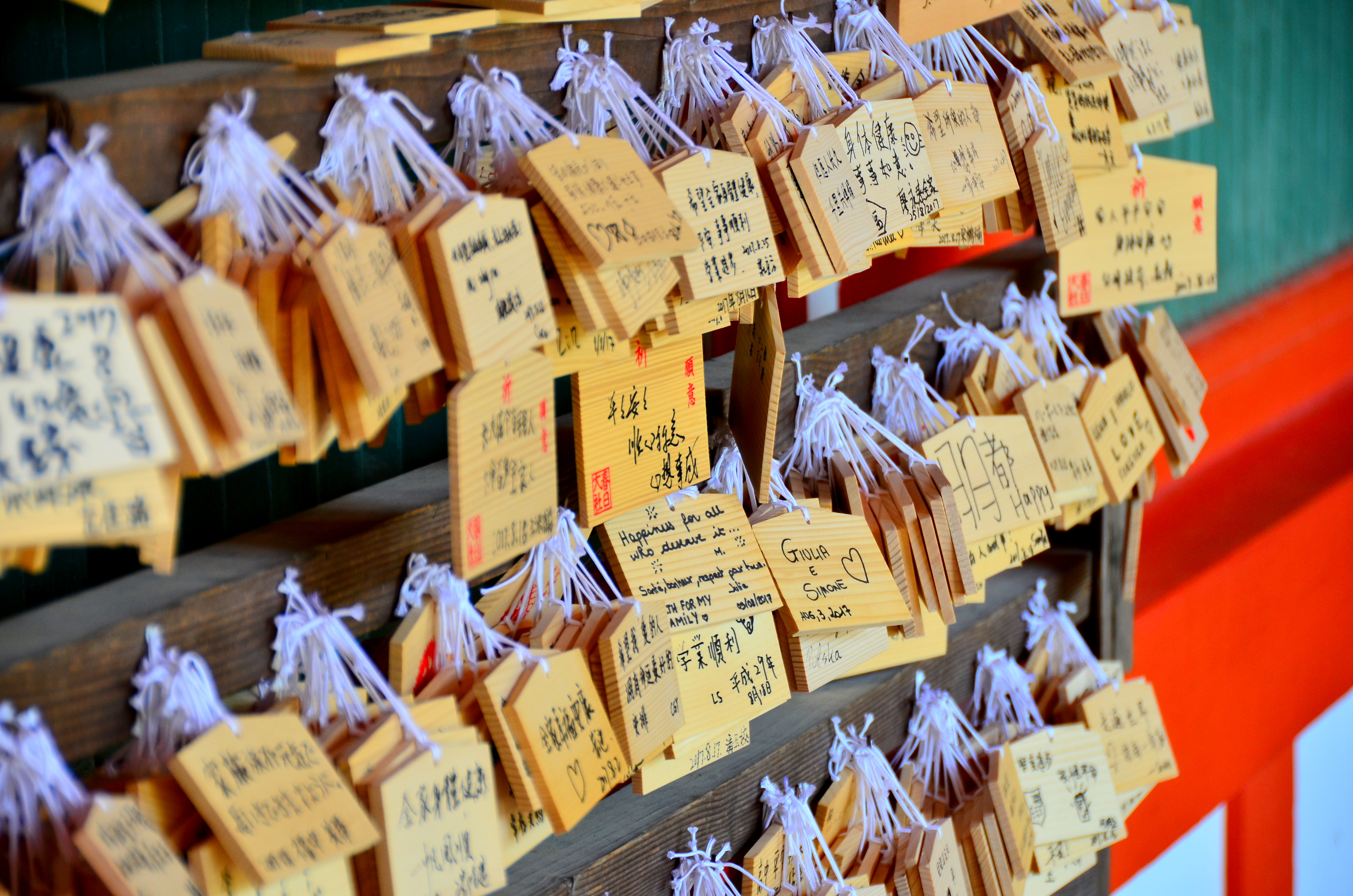|
Washinomiya Shrine
is one of the oldest Shintō shrines in the Kantō region, located in Kuki, Saitama (formerly Washimiya), Japan. History The oldest record of the shrine was found in the Azuma Kagami, the official historical record for the Kamakura Shogunate. It had the patronage of the Imperial family, and even Shōgun Tokugawa Ieyasu. Various folk-culture and performing art events, including the Saibara-Kagura Festival are held here. Its traditional dance handed down through generations has been designated as a national intangible folk-culture asset. The shrine also houses several ancient relics. During the New Year season, the shrine receives no fewer than 100,000 visitors.Fans flock to real-life home of anime hero A ... [...More Info...] [...Related Items...] OR: [Wikipedia] [Google] [Baidu] |
Torii
A is a traditional Japanese gate most commonly found at the entrance of or within a Shinto shrine, where it symbolically marks the transition from the mundane to the sacred. The presence of a ''torii'' at the entrance is usually the simplest way to identify Shinto shrines, and a small ''torii'' icon represents them on Japanese road maps. The first appearance of ''torii'' gates in Japan can be reliably pinpointed to at least the mid-Heian period; they are mentioned in a text written in 922. The oldest existing stone ''torii'' was built in the 12th century and belongs to a Hachiman shrine in Yamagata Prefecture. The oldest existing wooden ''torii'' is a ''ryōbu torii'' (see description below) at Kubō Hachiman Shrine in Yamanashi Prefecture built in 1535. ''Torii'' gates were traditionally made from wood or stone, but today they can be also made of reinforced concrete, copper, stainless steel or other materials. They are usually either unpainted or painted vermilion with a bl ... [...More Info...] [...Related Items...] OR: [Wikipedia] [Google] [Baidu] |
Akihabara
is a common name for the area around Akihabara Station in the Chiyoda ward of Tokyo, Japan. Administratively, the area called Akihabara mainly belongs to the and Kanda-Sakumachō districts in Chiyoda. There exists an administrative district called Akihabara in the Taitō ward further north of Akihabara Station, but it is not the place people generally refer to as Akihabara. The name Akihabara is a shortening of , which ultimately comes from , named after a fire-controlling deity of a firefighting shrine built after the area was destroyed by a fire in 1869.Cybriwsky, Roman. ''Historical dictionary of Tokyo.''Scarecrow Press, 2011. Akihabara gained the nickname shortly after World War II for being a major shopping center for household electronic goods and the post-war black market.Nobuoka, Jakob. "User innovation and creative consumption in Japanese culture industries: The case of Akihabara, Tokyo." ''Geografiska Annaler: Series B, Human Geography'' 92.3 (2010): 205–218.Yamad ... [...More Info...] [...Related Items...] OR: [Wikipedia] [Google] [Baidu] |
Kaori Fukuhara
is a Japanese voice actress and singer. She worked on the music group Bohemian Quarter's album "Blister Pack Voices". She and Emiri Kato were in a duo music group called Kato*Fuku, which sang theme songs for ''When Supernatural Battles Became Commonplace'' and '' Battle Spirits Saikyo Ginga Ultimate Zero''. Kato*Fuku released three albums from 2012 to 2015, and disbanded in 2016. Filmography Anime ONA / OVA *'' Lucky Star: Original na Visual to Animation'' (Tsukasa Hiiragi) (2008) *''Yotsunoha'' (Nanami Minami) (2008) *''Ashiaraiyashiki no Jūnin-tachi'' (Koma Ryusoji) (2010) *''Heaven's Lost Property'' (Astrea) (2010) *'' A Channel + smile'' (Run Momoki) (2012) *'' Chūnibyō demo Koi ga Shitai! Lite'' (Kuzuha Togashi) (2012) *'' Lucky Star: Miyakawa-ke no Kūfuku'' (Tsukasa Hiiragi) (2012) Anime Films *'' Heaven's Lost Property the Movie: The Angeloid of Clockwork'' (Astrea) (2011) *''Wake Up, Girls! Shichi-nin no Idol'' (Nanoka Aizawa) (2014) *'' Sora no Otoshimono Fina ... [...More Info...] [...Related Items...] OR: [Wikipedia] [Google] [Baidu] |
Emiri Kato
Emiri (written: 笑里, 英美里, 絵美里 or えみり in hiragana) is a feminine Japanese given name. Notable people with the name include: *, Japanese actress and singer *, Japanese voice actress *, Japanese violinist *, Japanese model Fictional characters *, a character in the light novel series ''Haruhi Suzumiya is a Japanese light novel series written by Nagaru Tanigawa and illustrated by Noizi Ito. It was first published in 2003 by Kadokawa Shoten in Japan with the novel ''The Melancholy of Haruhi Suzumiya'', and has since been followed ...'' {{given name Japanese feminine given names ... [...More Info...] [...Related Items...] OR: [Wikipedia] [Google] [Baidu] |
Voice Acting
Voice acting is the art of performing voice-overs to present a character or provide information to an audience. Performers are called voice actors/actresses, voice artists, dubbing artists, voice talent, voice-over artists, or voice-over talent. Voice acting is recognised as a specialized dramatic profession in the United Kingdom, primarily due to BBC broadcasts of radio drama production. Examples of voice work include animated, off-stage, off-screen or non-visible characters in various works such as feature films, dubbed foreign-language films, animated films, anime, television shows, video games, cartoons, documentaries, commercials, audiobooks, radio dramas and comedies, amusement rides, theater productions, puppet shows and audio games. Voice actors are also heard through pre-recorded and automated announcements that are a part of everyday modern life in areas such as shops, elevators, waiting rooms and public transport. The role of a voice actor may involve singing, most ... [...More Info...] [...Related Items...] OR: [Wikipedia] [Google] [Baidu] |
Social Phenomenon
Social phenomena or social phenomenon (singular) are any behaviours, actions, or events that takes place because of social influence, including from contemporary as well as historical societal influences. They are often a result of multifaceted processes that add ever increasing dimensions as they operate through individual nodes of people. Because of this, social phenomenon are inherently dynamic and operate within a specific time and historical context. Social phenomena are observable, measurable data. Psychological notions may drive them, but those notions are not directly observable; only the phenomena that express them. See also * Phenomenological sociology * Sociological imagination Sociological imagination is a term used in the field of sociology to describe a framework for understanding social reality that places personal experiences within a broader social and historical context. It was coined by American sociologist C ... References {{Reflist Sociological t ... [...More Info...] [...Related Items...] OR: [Wikipedia] [Google] [Baidu] |
Anime News Network
Anime News Network (ANN) is a news website that reports on the status of anime, manga, video games, Japanese popular music and other related cultures within North America, Australia, Southeast Asia and Japan. The website offers reviews and other editorial content, forums where readers can discuss current issues and events, and an encyclopedia that contains many anime and manga with information on the staff, cast, theme music, plot summaries, and user ratings. The website was founded in July 1998 by Justin Sevakis, and operated the magazine ''Protoculture Addicts'' from 2005 to 2008. Based in Canada, it has separate versions of its news content aimed toward audiences in four separate regions: the United States and Canada, Australia and New Zealand, and Southeast Asia. History The website was founded by Justin Sevakis in July 1998. In May 2000, CEO Christopher Macdonald joined the website editorial staff, replacing editor-in-chief Isaac Alexander. On June 30, 2002, Anime News N ... [...More Info...] [...Related Items...] OR: [Wikipedia] [Google] [Baidu] |
List Of Lucky Star Characters
This is a list of characters from the Japanese manga, video game, and anime series '' Lucky Star''. Main characters Konata Izumi ; : (old drama CD, NDS video game), Aya Hirano (anime, PS2 and PSP video game, new drama CD, ''Miyakawa-ke no Kūfuku'' anime and drama CD), Wendee Lee (English) :Konata is the leader of the ''Lucky Star'' crew, and the main protagonist of the series. She is the shortest of the main characters. Nicknamed , she is an eccentric but friendly and outgoing tomboy, with a mischievous yet good-natured sense of humor. She is smart, but doesn't apply herself to studying,''Lucky Star'' anime, episode 16. thus her grades are a bit variable. However, she is an expert at pulling "all-nighters".''Lucky Star'' anime, episode 2. In contrast to her studying habits, she loves playing video games. This can be seen in the OVA for the series, it is revealed that the MMORPG she plays with Nanako Kuroi is "Tower of Druaga: Recovery of Babylim".''Lucky Star'' anime, episo ... [...More Info...] [...Related Items...] OR: [Wikipedia] [Google] [Baidu] |
Ema (Shintō)
are small wooden plaques, common to Japan, in which Shinto and Buddhist worshippers write prayers or wishes. are left hanging up at the shrine, where the (spirits or gods) are believed to receive them. Typically wide and tall, they often carry images or are shaped like animals, or symbols from the zodiac, Shinto, or the particular shrine or temple. In ancient times, people would donate horses to the shrines for good favor; over time this was transferred to a wooden plaque with a picture of a horse, and later still to the various wooden plaques sold today for the same purpose. Once inscribed with a wish, are hung at the shrine until they are ritually burned at special events, symbolic of the liberation of the wish from the writer. History In some early Shinto and folk traditions of Japan, horses were seen as carrying messages from the , and were usually used to transmit requests during droughts or famines. Horses were extremely expensive, and figures made of clay or wood ... [...More Info...] [...Related Items...] OR: [Wikipedia] [Google] [Baidu] |
Cosplay
Cosplay, a portmanteau of "costume play", is an activity and performance art in which participants called cosplayers wear costumes and fashion accessories to represent a specific character. Cosplayers often interact to create a subculture, and a broader use of the term "cosplay" applies to any costumed role-playing in venues apart from the stage. Any entity that lends itself to dramatic interpretation may be taken up as a subject. Favorite sources include anime, cartoons, comic books, manga, television series, and video games. The term is composed of the two aforementioned counterparts – costume and role play. Cosplay grew out of the practice of fan costuming at science fiction conventions, beginning with Morojo's "futuristicostumes" created for the 1st World Science Fiction Convention held in New York City in 1939. The Japanese term was coined in 1984. A rapid growth in the number of people cosplaying as a hobby since the 1990s has made the phenomenon a significant asp ... [...More Info...] [...Related Items...] OR: [Wikipedia] [Google] [Baidu] |
Sankei Shimbun
The (short for ) is a daily newspaper in Japan published by the It has the seventh-highest circulation for regional newspapers in Japan. Among Japanese newspapers, the circulation is second only to ''Yomiuri Shimbun'', Seikyo Shimbun, ''Asahi Shimbun'', ''Chunichi Shimbun'', ''Mainichi Shimbun'', ''the Nikkei'', Nikkan Gendai, and Tokyo Sports. This newspaper is not actually a national newspaper, but a block newspaper whose publishing area is Kansai and Kanto. However, it was classified as a "national newspaper" by the reverse course policy of the business world (Keidanren). Corporate profile The ''Sankei Shimbun'' is part of the Fujisankei Communications Group and is 40% owned by Fuji Media Holdings. The company is also the owner of Osaka Broadcasting Corporation (OBC, Radio Osaka). History The ''Sankei Shimbun'' was created by the merger of two older newspapers: ''Jiji News'' and ''Nihon Kogyō Shimbun''. ''Jiji News'' was founded in 1882 by author, translator, and jour ... [...More Info...] [...Related Items...] OR: [Wikipedia] [Google] [Baidu] |
Pilgrimages
A pilgrimage is a journey, often into an unknown or foreign place, where a person goes in search of new or expanded meaning about their self, others, nature, or a higher good, through the experience. It can lead to a personal transformation, after which the pilgrim returns to their daily life. Background Pilgrimages frequently involve a journey or search of moral or spiritual significance. Typically, it is a journey to a shrine or other location of importance to a person's beliefs and faith, although sometimes it can be a metaphorical journey into someone's own beliefs. Many religions attach spiritual importance to particular places: the place of birth or death of founders or saints, or to the place of their "calling" or spiritual awakening, or of their connection (visual or verbal) with the divine, to locations where miracles were performed or witnessed, or locations where a deity is said to live or be "housed", or any site that is seen to have special spiritual powers. S ... [...More Info...] [...Related Items...] OR: [Wikipedia] [Google] [Baidu] |







